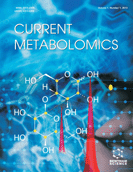Abstract
Studies have been performed to investigate the metabolic effects of high and low salt diets in Old Order Amish using a 1H nuclear magnetic resonance (1H NMR)-based metabolomic method. Subjects received a high and low sodium diet for 6 days each, separated by a 6-14 day washout period. Urine samples were collected on the fourth to sixth days of each diet and evaluated by NMR. Over 30 metabolites were identified and the whole 1H NMR spectra of 37 samples from two diet groups were analyzed by principle component analysis (PCA) and Partial Least Squares Discriminant Analysis (PLS-DA). Osmolytes, such as trimethlamine N-oxide (TMAO), glycine, 1- and 3- methylhistidine, showed distinct differences between the low and high salt groups which may be associated with renal stress coming from the high salt diet. From this study, it can be established that the NMR spectrum provides a unique profile for the high salt diet and that metabolomic technology is of value for the analysis of human dietary data.
Keywords: Diet, high salt, low salt, metabolomics, NMR, old order Amish.
 27
27

















